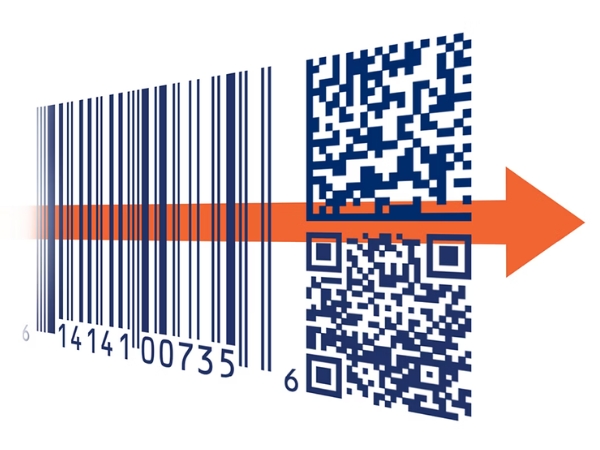
23/06/25
Sunrise 2027 is an initiative led by GS1 that will see 2D codes usher in a new era of product information transparency, traceability, and authentication.
Why is this important? While it might seem like a simple switch, there will be implications for brands and retailers and their packaging.
The time to act is now and make sure you’re ready for a new dawn in packaging.
Contact us today to discuss your options
A new dimension
Since the first barcode was read commercially on 26 June, 1974 at a grocery store in the US state of Ohio, 1D codes have become ubiquitous in global retail environments and supply chains. They have provided quick access to essential information.
However, as the world has moved on, so 1D codes have found themselves wanting. While suited to simple product identification, looking up prices, and rudimentary tracking, there is now demand for far more information, as exampled by Digital Product Passports (DPPs).
Required under the EU's Ecodesign for Sustainable Products Regulation (ESPR), DPPs store and share detailed product information about sustainability, durability, and environmental impact. They provide information on a product's lifecycle, from origin to disposal, and are intended to improve circularity and transparency.
Without 2D codes, it is nearly impossible to deliver this information effectively, reliably, and digitally.
There has already been a move to 2D codes in supply chains in recent years. These are a compact and data-rich way to store and retrieve vast amounts of information that businesses rely on.
For consumers, the Covid-19 worldwide pandemic brought 2D codes into the mainstream psyche. QR codes were used from everything from health passes, contact tracing, and booking medical appointments, to e-commerce activations and ordering in restaurants and bars.
This has all resulted in a move to make 2D codes the standard data communication format and given birth to the Sunrise 2027 initiative.
What is the Sunrise 2027 Initiative?
This initiative requires retailers around the world to ensure their POS systems are equipped with scanners capable of reading both traditional barcodes and 2D barcodes by the end of 2027. New technology is already being tested in almost 50 countries across the world, representing nearly 90% of the world’s GDP.
An industry statement – issued by GS1 and signed by the likes of Alibaba, Barilla, Carrefour, Dr. Oetker, Lidl, Mondelēz International, Nestlé, P&G, and Yili Group – states: “Placing QR codes with GS1 standards on product packages worldwide will enable manufacturers and retailers to provide new powerful digital experiences, engaging consumers and shoppers as they interact with products, whether in store, at home, or out in the world.”
Read the full joint industry statement here
Packaging’s role
The move to 2D codes is more than a technological upgrade. It will require brands and retailers to look again at their packaging, consider their design, and ensure codes are printed to the highest quality.
Printing 2D codes on flexible packaging can present several challenges, including ensuring readability, dealing with various packaging materials, and maintaining high-speed printing capabilities. The size and density of 2D codes can make them difficult to read on small or irregularly shaped packaging, while the diverse range of materials requires expert knowledge to get the best results.
For example, code placement, size, and contrast are particularly important for flexible packaging. Wrinkled packs, materials that are more reflective, and unusual shapes must all be considered to ensure optimal scanning and avoid issues at the point of sale.
This makes it critical to work with a partner that understands the changes and the challenges. They must be able to advise, guide, design, prepare, and print packaging that is ready for Sunrise 2027.
What does this mean for brands and retailers?
You need a packaging partner that uses up-to-date print technology and is able to produce the volumes of flexible packaging needed at the quality level required by Sunrise 2027.
At Korozo Group, our high-end flexographic presses complemented by full inspection and quality control solutions, ensure that we provide printing with the detail and clarity required to support the creation of 2D codes that can be scanned without fear of being misread. Printing up to 1500mm-wide and at high speeds, we deliver the volumes still required by so many in the market.
Using our decades of experience in printing high-quality flexible packaging, registration is precise, the print process is tightly controlled, half tones deliver sharp edges, and ink laydown and density ensure high contrast.
By taking advantage of these capabilities, brands and retailers can secure the flexible packaging needed to see in the dawn of Sunrise 2027 and set the sun on 1D codes.
Contact us today to find out more about Sunrise 2027 and how we can help you get ready.


 TURKISH
TURKISH
